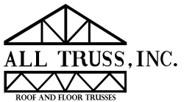 U.S. Housing starts rose .2% from a month earlier to a seasonally adjusted annual rate of 1.21 million last month, the highest since October 2007, according to the Commerce Department.
U.S. Housing starts rose .2% from a month earlier to a seasonally adjusted annual rate of 1.21 million last month, the highest since October 2007, according to the Commerce Department.
New home construction is booming – and laying a strong foundation for a possible interest-rate increase. “Construction activity is picking up across the country, which we take as a positive signal about the health of the U.S. consumer and overall economy,” Barclays economist Jesse Hurwitz said in a note to clients. Single-family construction generally provides a bigger boost to the economy, and single-family starts were up by 12.8%.
U.S home builders also appear more optimistic. The National Association of Home Builders’ confidence index rose to its highest level since November 2005, to a reading above 61 in August. A reading above 50 means most builders generally hold a favorable view of the market for newly built, single-family homes.
Changes in housing starts tend to predict the direction of the unemployment rate some 12 to 18 months later. Indeed, the connection is so strong and has held for so long that housing starts can be fairly said to be among the most powerful economic leading indicators available.
Strong demand for homes could also mitigate some of the squeeze that rising interest rates will put on mortgage lending. An improving economy and rising employment could prompt looser standards for purchase mortgages and first-time buyers.
Notably, though, there are few signs that housing itself is overheating. Starts are still below where they were for most of the 1990’s, before the housing bubble. This suggests that they could keep rising, at least until they get closer to the annualized pace of 1.5 million new units that many economists consider “normal”.
The gulf between builder sentiment, which has surged, and slowly rising single-family starts has grown since 2011.
Excerpted and edited from WSJ


